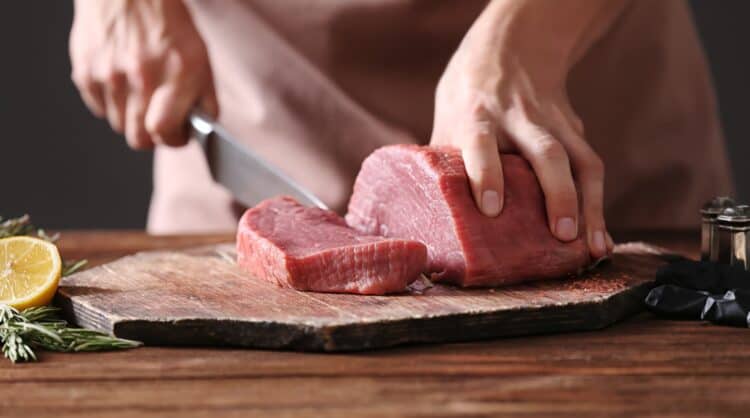It is no secret that I love cooking and eating, which is why I try my best to learn everything I can about preparing perfectly cooked meat, whether it’s beef, pork, or chicken.
I am mostly frustrated when I end up with chewy meat, which I blame for the freshness or quality of my bought meat. One thing I didn’t know before is that there is a right way to cut them – to cut against the grain.
While the cut of meat will determine its tenderness, how it is done is also a significant factor. It is important to cut across or against the grain of the meat to prevent it from becoming tough or chewy. Slicing in this direction, whether it is raw or cooked, will make it easier to chew meat and can also help in making it juicier.
Cutting against the grain is one thing, but identifying it can sometimes be tricky, too.
What is the Grain in Meat?
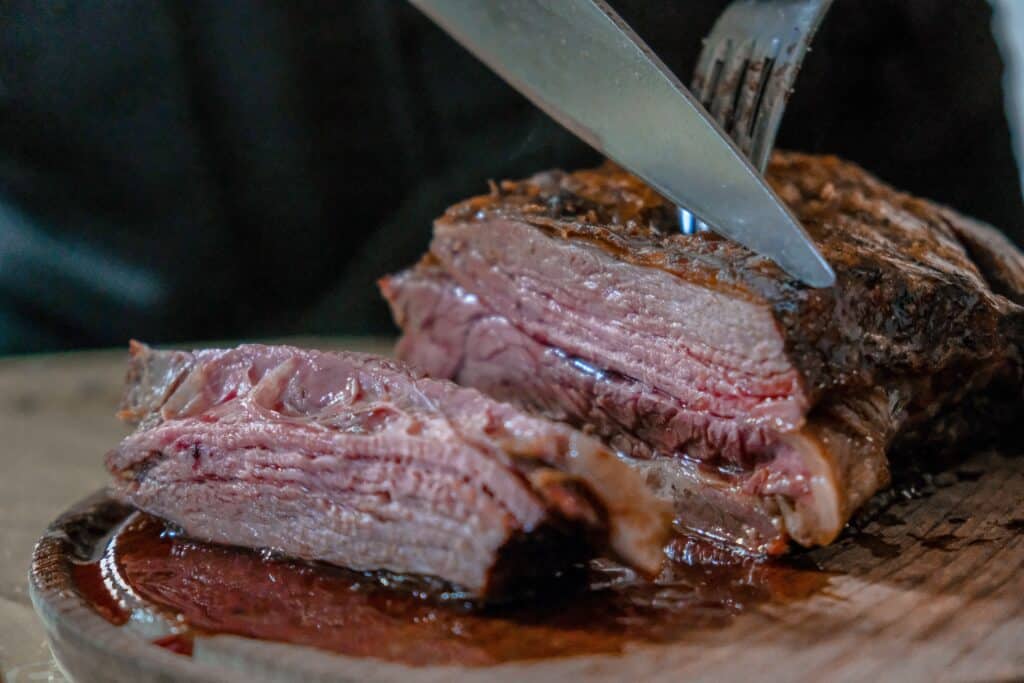
Grain can mean many things but when it comes to meat, it pertains to the direction of the meat’s muscle fibres. It is easy to identify it most of the time. However, not all meats are created the same.
To find the direction of the grain, check the lines on the meat’s surface. Depending on the kind of cut, some lines are easier to find than others. Why is that? The muscles that get used heavily on animals tend to produce clearer lines because they are tougher.
Cuts such as tenderloin and loin are more tender compared to skirt steak or flank because muscles on those parts are rarely used. Tenderloins have thinner fibres which makes it more difficult to identify where the grain is.
When dealing with cuts such as loins, pulling the meat can help tell the direction of the grain. If the fibres are separating, then it means you are pulling against the grain.
How to Cut Against the Grain
Once you know what grain looks like and how to identify where it is going, it is now easier to cut the meat against the grain. To do this, slice the meat in a different direction where the lines run.
For example, if the fibres run vertically, slice the meat perpendicularly and not in the same direction. This will shorten the fibres making the meat easier to chew because the muscle fibres are broken up already.
However, not all cuts are the same and some may have fibres coming from different directions. If this is the case, identifying where the grains are running can be a bit challenging. Learning how to read the meat is important when dealing with this situation and adjusting where to slice it is vital.
Cutting the meat in the same direction the fibres are going will make the meat chewier. While doing this will still make the meat chewable, I think most people would appreciate it if they spent less time chewing. Besides, a perfectly seasoned and cooked steak can easily be ruined by how chewy it is.
Different Cuts of Meat
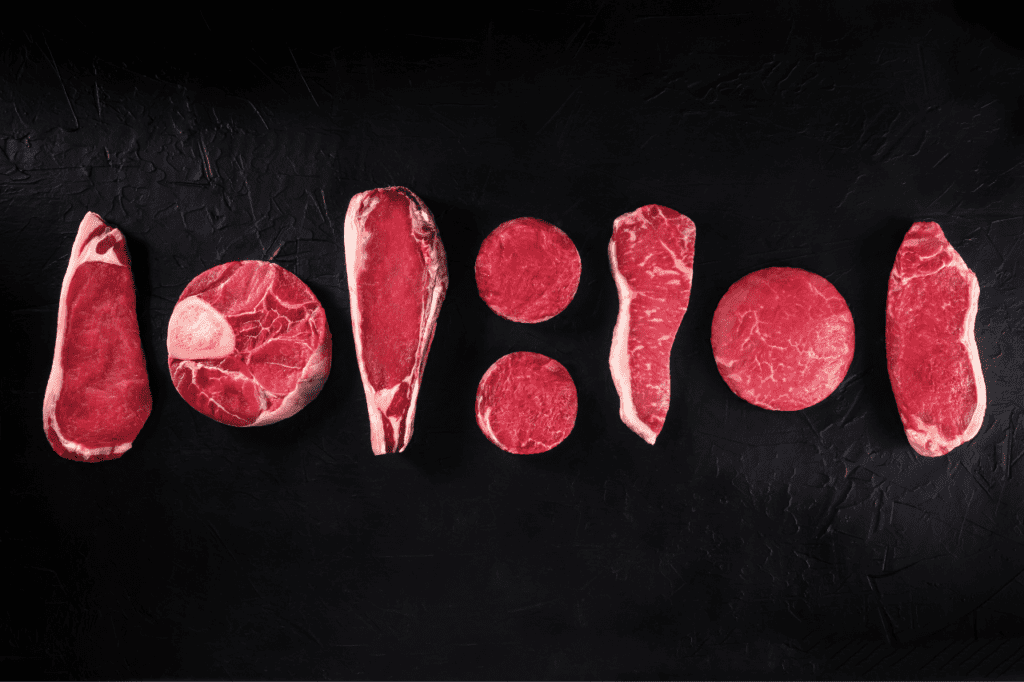
Learning the different cuts of meat can come in handy when buying from a butcher shop. It is also helpful in deciding which cut to get depending on how you want to cook the meat. Since there are different types of meat, I’ll focus on the different beef cuts.
Chuck
Chuck is the part where it gets a lot of work or movement from the cow. It is found at the front upper section of the cow’s body. This part is mainly known as shoulder steak, chuck eye steak, boneless short ribs, and chuck 7-bone. This cut tends to have lesser fat and are very lean, which can be tough and not recommended for searing or grilling. However, it is best used when making pot roasts.
Sirloin
Sirloin is found slightly at the back of a short loin and on the upper middle part of the cow. Cuts from a sirloin are tri-tip roast, tri-tip steak, and top sirloin.
Short Loin
The short loin is also cut from the upper middle section part of the cow. It has a good proportion of fat and muscle, making it great for steak and roasts. The short loin is usually labelled as top loin steak, Porterhouse, and T-bone.
Rib
The rib is the cut where almost everyone is familiar, especially if you love eating barbeque ribs. Ribs are great for grilling, while ribeye steak is perfect for cooking in the oven or pan-seared. Most people favour ribeye steak because of the juiciness and flavour it provides, mainly because of the good balance of fat and muscle.
Brisket
The brisket is located at the lower front part of the cow, which can be very tough. It can be challenging to cook it, but as long as the temperature is set low and cooked for a long time, you can never go wrong with a brisket.
Round
Similar to chuck, this part is heavily used by cows, making it tougher than other cuts. It is found in the back area of the cow. This cut is mostly cooked like chuck, so it is best for stews and pot roasts. However, a lot of butchers also use this for hamburger meat.
Fore Shank
The fore shank is found at the back of the brisket, just below the cow’s front legs. This cut is not recommended for grilled, pan-fried steak but will work best for braised beef. Cooking it slowly at a low fire will make the fore shank tender enough to chew it.
Flank
The flank is found at the back of the hind legs. It is the part used in flank steak and can be flavourful like the ribeye but is more affordable. It is ideal for pan-frying or grilling, especially if marinated overnight to make it more tender.
Short Plate
The short plate is the underbelly of the cow and is just in front of the flank. While this part can be tough, it has a lot of flavour to it because of its fat layers and being close to the rib bones. Hangar steak and skirt steak come from this part. Due to its toughness, it is ideal for braised beef.
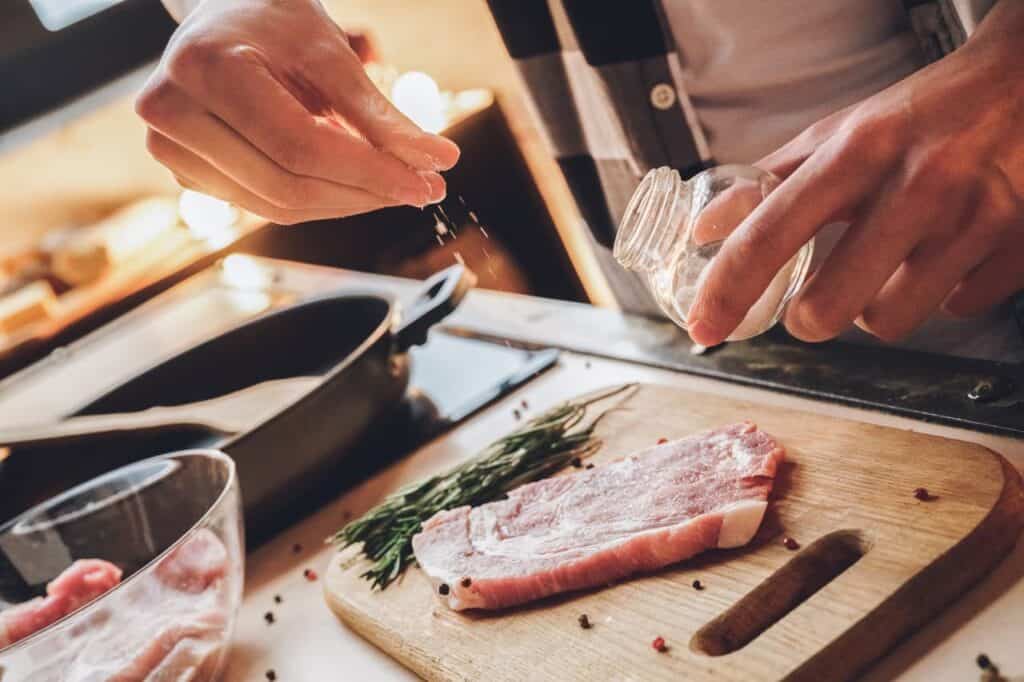
How to Make Meat Tender
While cutting against the grain can help make meat more tender and juicier, some cuts can be very tough even when sliced the right way. But there are ways to tenderise these cuts and I’m going to share some tricks I’ve learned.
- Marinade it
Marinating cuts such as skirt steak or flank will make them easier to chew after grilling. Using ingredients like vinegar or lemon juice will help break down proteins that make them tough. Plus they can give a nice flavour to the meat.
- Use a Meat Tenderiser
Using a meat mallet can help tenderise cuts such as chuck. Doing this will help break down the muscle fibres, just don’t overdo it unless you want your meat to turn into mush. Poking the meat with a fork will also do the trick.
- Put Some Salt
Salt helps draw out moisture from the meat and can create a natural brine. Aside from acting as a tenderiser, it also helps concentrate the flavours. Salting the meat can be done with or without marinating it as long as you put some salt before cooking. To find out if it is working, check the colour of the meat. If it turns into a deeper red colour, then it’s doing its magic.
- Let it Sit in Room Temperature
Let the meat to sit for at least 30 minutes at room temperature before cooking it, especially for lean cuts and grass-fed beef. Doing this will cook the meat evenly, making it more tender.
- Let the Meat Rest
Not letting the meat rest can make it tough and dry even when cooked and prepared properly. Allow the meat to rest for at least five minutes for every inch of thickness. By allowing the meat to rest before slicing, the juices will not spill and will be distributed evenly inside the meat, leaving you with tender and juicy steak.
Related Questions
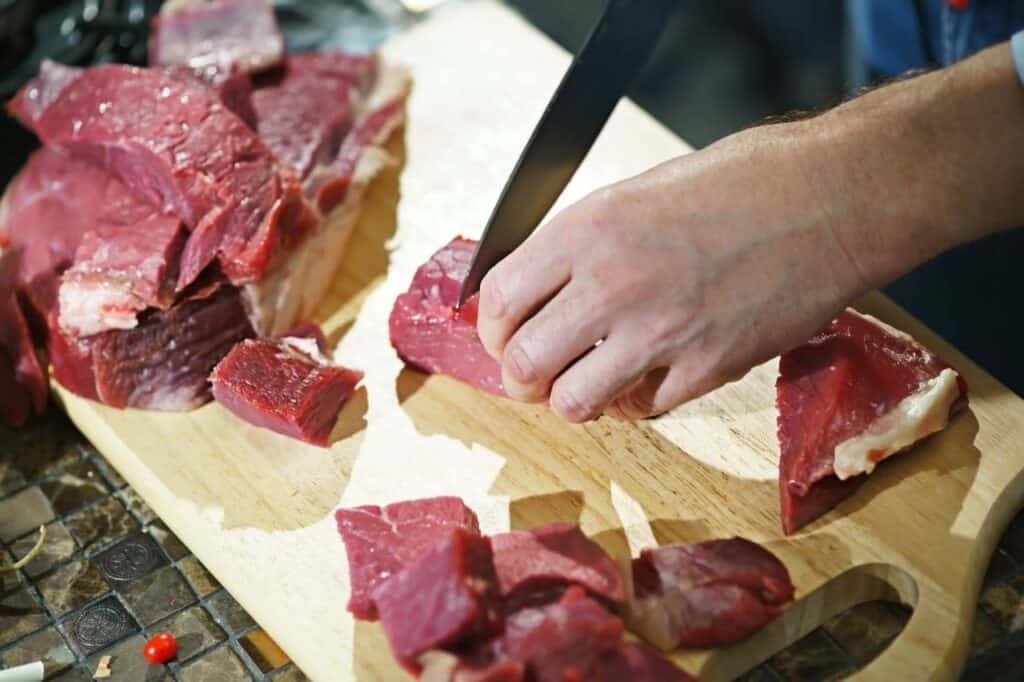
The direction in which you cut the meat is very important because cutting it the right way will make your meat easy to chew. The right way to cut your meat is by cutting it against the grain. Slicing it against the grain will reduce the length of the muscle fibres, making it much easier to chew.
Consuming meat particularly red meat may not be good for the health. Red meat from animals is rich in saturated fats that can cause a high level of bad cholesterol. High levels of bad cholesterol can increase health risks such as heart disease, stroke, and certain cancers. Cutting down on meat also encourages people to eat more fruits and vegetables, which is more beneficial for the body.
- Does Using Pellet Smokers Dry Out Meat? – Myth or Fact - January 4, 2022
- 12 Best Meats To Cook On A Pellet Smoker - December 30, 2021
- Dry Brining: What, How, Why & More - December 28, 2021

